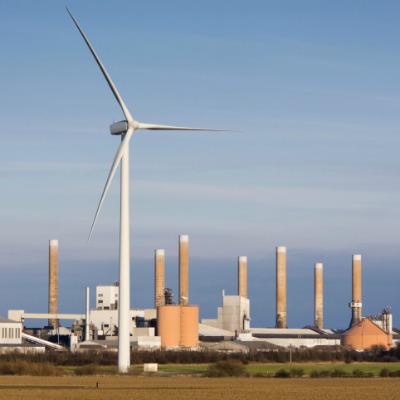 Renewable energy technologies, such as wind and solar, stand to benefit from the Environmental Protection Agency's (EPA) sweeping proposal to limit carbon dioxide pollution from existing power plants under Section 111 (d) under the Clean Air Act.
Renewable energy technologies, such as wind and solar, stand to benefit from the Environmental Protection Agency's (EPA) sweeping proposal to limit carbon dioxide pollution from existing power plants under Section 111 (d) under the Clean Air Act.
Under the EPA's proposed Clean Power Plan, the agency seeks to cut carbon emissions from the power sector by 30% below 2005 levels. Although few hard numbers were available immediately following the EPA's 1,000-plus-page proposal, Tom Vinson, the American Wind Energy Association's (AWEA) vice president for federal regulatory affairs, says the EPA plan could be the third largest driver of wind-powered generation behind state renewable portfolio standards (RPS) and the federal production tax credit (PTC).
Stricter power plant regulations could mean less coal, which could open up a big opportunity for wind power. Last year, AWEA did a study that estimated the retirement of U.S. coal plants could lead to an increase of up to 17 GW of wind capacity – roughly 28% of the current installed U.S. wind generation.
Just the same, the likely raising of electricity rates caused by the proposed regulations on existing power plants would also bring wind and solar generation closer to grid parity – an opportunity not lost on the wind and solar developers contacted by NAW.
"We know from firsthand experience that building more wind and solar power facilities [has] proven to be the fastest, cleanest and cheapest way to replace dirty power plants and combat climate change," says Paul Gaynor, CEO at Boston-based wind and solar developer First Wind, adding the cost for wind power, for example, has dropped 42% since 2009.
"We hope that these new EPA rules underscore that we have a chance right now to make long-term decisions to lock in affordable power with clean, renewable energy for decades to come."
Gabriel Alonso, CEO at EDP Renewables North America, says, "Wind energy has been a proven, cost-competitive and stable source of carbon-free electricity that has driven and continues to drive billions of dollars of investment nationwide, creating jobs and supporting rural economies while contributing to substantial reductions in U.S. greenhouse gas emissions. This rule will help accelerate that trend."
Compliance
According to the EPA, its draft legislation will be implemented through a state-federal partnership under which states will identify a path forward using either current or new electricity production and pollution control policies.
As opposed to shutting down the power plants immediately, the EPA plan allows states to tailor a method to comply over a specified period of time. States can choose a mix of energy efficiency, demand-side management and state/regional policies to meet the program's goals.
While the notion of ratcheting up emission standards at U.S. power plants is not new – nine Northeast and Mid-Atlantic states comprise the Regional Greenhouse Gas Initiative (RGGI), the U.S.' first market-based regulatory program to reduce carbon dioxide – critics contend that such a mandate to limit carbon reductions is complex and arbitrary.
‘Some have suggested that the 30 percent target is more reasonable than anticipated,’ says Scot Segal, executive director at the Electric Reliability Coordinating Council, a coalition of power companies working on clean air issues.
‘But the truth is that the most cost-effective reductions since 2005 – perhaps the first 10 percent – have already been undertaken. What is left on the road to 2030 is increasingly more expensive and less tested alternatives."
Segal also cautions that if the economy grows, so too will energy demand, "which will complicate the glide path the EPA anticipates."
Just the same, RGGI maintains that the program is working. According to a RGGI spokesperson, the program has helped participating states reduce carbon dioxide emissions by approximately 40% since 2005, in conjunction with market responses and other state clean energy polices. RGGI says the program is based on emission allowances that are distributed, providing certainty that the projected emission reductions will be achieved, including reductions attributable to energy efficiency and renewable energy, such as wind and solar.
Individual states are already working to determine their level of exposure created by the EPA's draft legislation, according to Vinson. In fact, he says, some forward-looking states are looking to New York, a RGGI member, for information on how to comply.
The EPA plan will also likely have a profound effect for the 29 states plus the District of Columbia that feature an RPS, says Tom Wood, a partner at Stoel Rives. He says the EPA plan will likely stimulate "regulatory and market-based actions" to acquire additional wind and solar generation. Conversely, Wood says non-RPS states have already indicated that they consider any "outside the fence line" options to be illegal and subject to extensive legal and legislative challenges.
Wood says states must submit CO2 reduction plans to the EPA for approval by June 30, 2016. These plans can be single state or multi-state. States preparing single-state plans can get an extension to June 30, 2017; states joining a multi-state plan can get a two-year extension.



